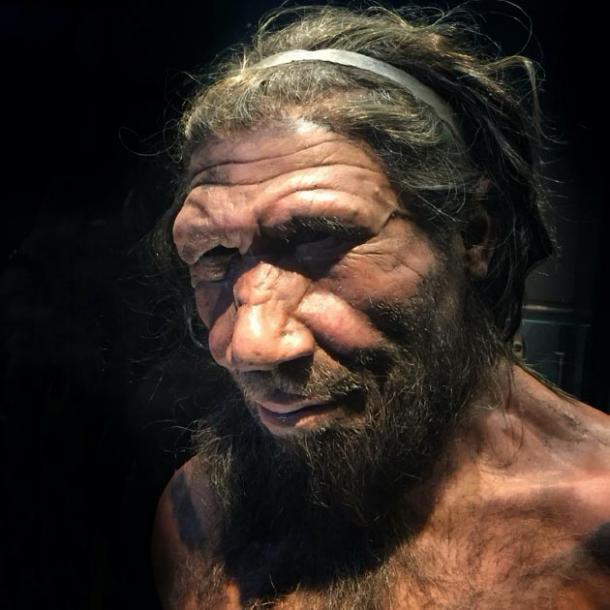Walking Into Danger? Italian Devil’s Footprints Mystery Revealed
An ancient set of footprints commonly known as the ‘devil footprints’ on the side of an extinct volcano have long frightened and intrigued people in southern Italy. In reality, it was thought that these prints belonged to a species of hominids. Researchers now believe that they are actually the footprints of Neanderthals.
The footprints are found on the slope of the extinct Roccamonfina volcano in Campania, Italy, which has been dormant for at least 50,000 years. There are three sets of footprints and an impression measures roughly 8 inches (22 cm) long and 4 inches (11cm) wide. These imprints are in remarkable condition and are up to 385,000 years old.
Devil’s Trails
According to Science Alert, local people call them the “Ciampate del Diavolo or Devil's Trail’’. After all, the prints were made when the slopes of Roccamonfina were molten, and it was assumed that only a devil could walk on red-hot lava and rock. Local legend has it that the devil made them as he made his way from Hell via the volcano to Earth.

Volcano Roccamonfina today in Italy, where the ‘devil’s footprints’ were found. (Roccamonfina / public domain)
However, a study by researchers, from the University of Padua, proved in 2003 that the prints, which are remarkably preserved, were not made by a devil but by an early human. According to Disclosure PW, a team led by Adolfo Panarello “identified them as hominids, making them the oldest known hominid prints outside of Africa at the time.” It was though that the early humans walked on the cooled pyroclastic flow and these prints were then covered by volcanic dust until they were revealed in the 17 th century. Handprints were also found among the footprints and this suggested that they were made by hominids, who were trying to balance themselves as they made their way on the slope.
- Neanderthals Cared for Each Other and Survived into Old Age – New Research
- Coastal Neanderthals Went Diving For Tools
- Controversial Footprint Suggests Human-like Creatures May Have Roamed Crete Nearly 6 Million Years Ago

‘Devil footprints’ on the Ciampate del Diavolo. (Edmondo Gnerre /CC BY 2.0)
The Mystery of the Devil’s Footprints
Disclosure PW, reports that the prints “predate the emergence of Homo sapiens” that are anatomically modern humans. While the footprints came from an early human there was no agreement as to which species may have made them. Because the prints were made over a long period, they could have been made by one of several early human species. They could have been the imprints of a “Homo heidelbergensis (an extinct hominid discovered near Heidelberg, Germany), Neanderthal, Denisovan or something else,” according to Disclosure. PW.
The new study examined the footprints to understand which early humans made the prints. They were able to identify 14 new hand and footprints. In total, they studied over 80 prints. Disclosure PW reports that “they were able to identify at least five distinct individuals, including one with rather large feet identifying it as an adult male.”

Another shot of the ‘devil footprints’ on the Ciampate del Diavolo in Italy. (Edmondo Gnerre / CC BY 2.0)
Made by Neanderthals?
The team compared the footprints to those of other archaic humans. Science Alert reports that they were similar to “the feet of individuals buried in the Sima de Los Huesos ‘Pit of Bones’” in Spain. This is a cave that is full of the remains of early Neanderthals. They flourished in Eurasia until about 40,000 years ago. Panarello is quoted as saying in Disclosure. PW, that “we have decided to keep the attribution to a specific species still pending.”
However, the researchers found something mysterious. The last set of prints that were found indicate that the individuals were not running away from the volcano but were running up it. Disclosure PW reports that the team found that “the measurements taken of the gait of the individuals show that they were in no hurry.” They were not fleeing for safety but were putting themselves in danger, and they probably visited the volcano only a few hours after it erupted.

3D depiction of a Neanderthal from Natural History Museum, London. This is to show the type of early human that may left the ‘devil’s footprints’. (Allan Henderson / CC BY 2.0)
Disaster Tourism
There is the possibility that “the volcano may have been an important site for” the archaic humans according to the New Scientist. Then there is the real possibility that they were merely curious and wanted to learn about the eruption and this was not for the faint-hearted. Science Alerts states “perhaps disaster tourism isn't a recent thing, after all.” Another possibility is that young adults may have been showing their bravery in an act of bravado.
The study has done so much more than finally prove that the devil footprints are human and that they probably were made by Neanderthals. What the prints indicate is that the archaic humans shared some of the characteristics of modern humans in their complex behaviors. The findings of the study are published in the Journal of Quaternary Science.
Top image: ‘Devil footprints’ on the Ciampate del Diavolo. Source: Edmondo Gnerre / CC BY 2.0
By Ed Whelan




















Comments
Something could have been missed here. namely the "one with rather large feet identifying it as an adult male.” Could he have had animal skin wrapped around his feet for protection against the hot ground?